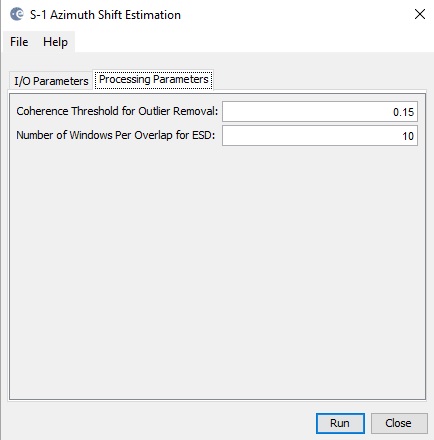
| Azimuth Shift Estimation using Enhanced
Spectral Diversity (EDS) |
 |
This
operator follows the S-1
Back Geocoding operator in the TOPS InSAR processing
chain. The operator estimates a constant
azimuth offset for the whole sub-swath using a Enhanced Spectral
Diversity (ESD) method. The ESD approach exploits the data at the
overlapped area of the adjacent bursts. The estimation is done for
a number of windows in every overlapped area and the final azimuth
offset is obtained by averaging all the
estimations.
The estimated azimuth shifts (overall shift for the whole sub-swath and shifts estimated for all windows in the overlapped areas) are saved in both the metadata of the output product and in an ASCII file with reference acquisition date and "_azimuth_shift" in the file name. The file can be found at user's \.snap\var\log folder.
User can review the azimuth shifts estimated for all sub-swathes and decide which shift value will be used in the azimuth shift correction. To perform the azimuth correction, user can run the S-1 Enhanced Spectral Diversity operator with the user selected azimuth shift value.
Generally users do not need to run this operator if they do not need to review the azimuth shift values. They can run the S-1 Enhanced Spectral Diversity operator directly where the azimuth shift is estimated using EDS and used directly in the azimuth shift correction. However, there are some cases where data in one sub-swath is corrupted and cannot be used in the azimuth shift estimation. In this case, users can use the azimuth shift estimated for other sub-swath in the correction of current sub-swath.
